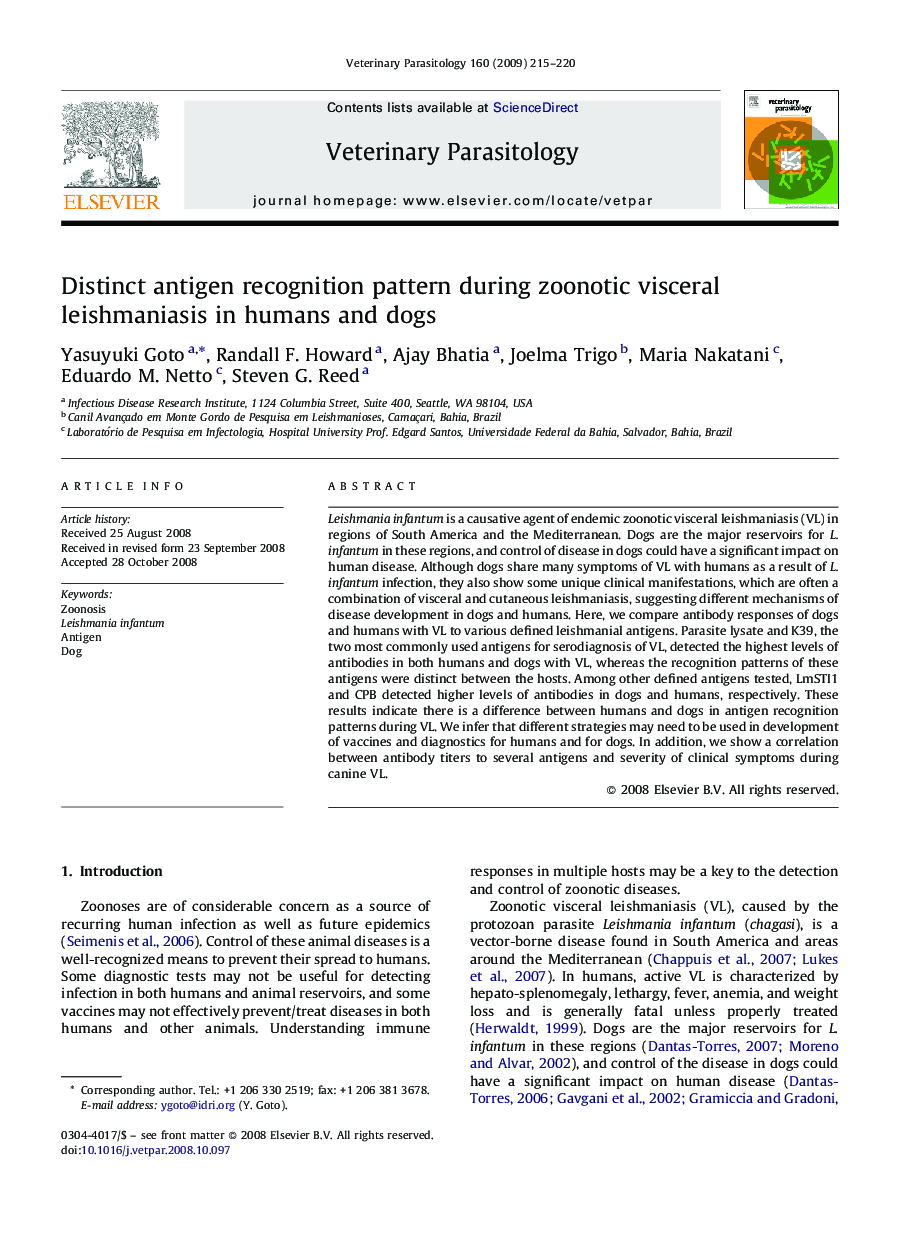| کد مقاله | کد نشریه | سال انتشار | مقاله انگلیسی | نسخه تمام متن |
|---|---|---|---|---|
| 2471190 | 1555757 | 2009 | 6 صفحه PDF | دانلود رایگان |

Leishmania infantum is a causative agent of endemic zoonotic visceral leishmaniasis (VL) in regions of South America and the Mediterranean. Dogs are the major reservoirs for L. infantum in these regions, and control of disease in dogs could have a significant impact on human disease. Although dogs share many symptoms of VL with humans as a result of L. infantum infection, they also show some unique clinical manifestations, which are often a combination of visceral and cutaneous leishmaniasis, suggesting different mechanisms of disease development in dogs and humans. Here, we compare antibody responses of dogs and humans with VL to various defined leishmanial antigens. Parasite lysate and K39, the two most commonly used antigens for serodiagnosis of VL, detected the highest levels of antibodies in both humans and dogs with VL, whereas the recognition patterns of these antigens were distinct between the hosts. Among other defined antigens tested, LmSTI1 and CPB detected higher levels of antibodies in dogs and humans, respectively. These results indicate there is a difference between humans and dogs in antigen recognition patterns during VL. We infer that different strategies may need to be used in development of vaccines and diagnostics for humans and for dogs. In addition, we show a correlation between antibody titers to several antigens and severity of clinical symptoms during canine VL.
Journal: Veterinary Parasitology - Volume 160, Issues 3–4, 23 March 2009, Pages 215–220